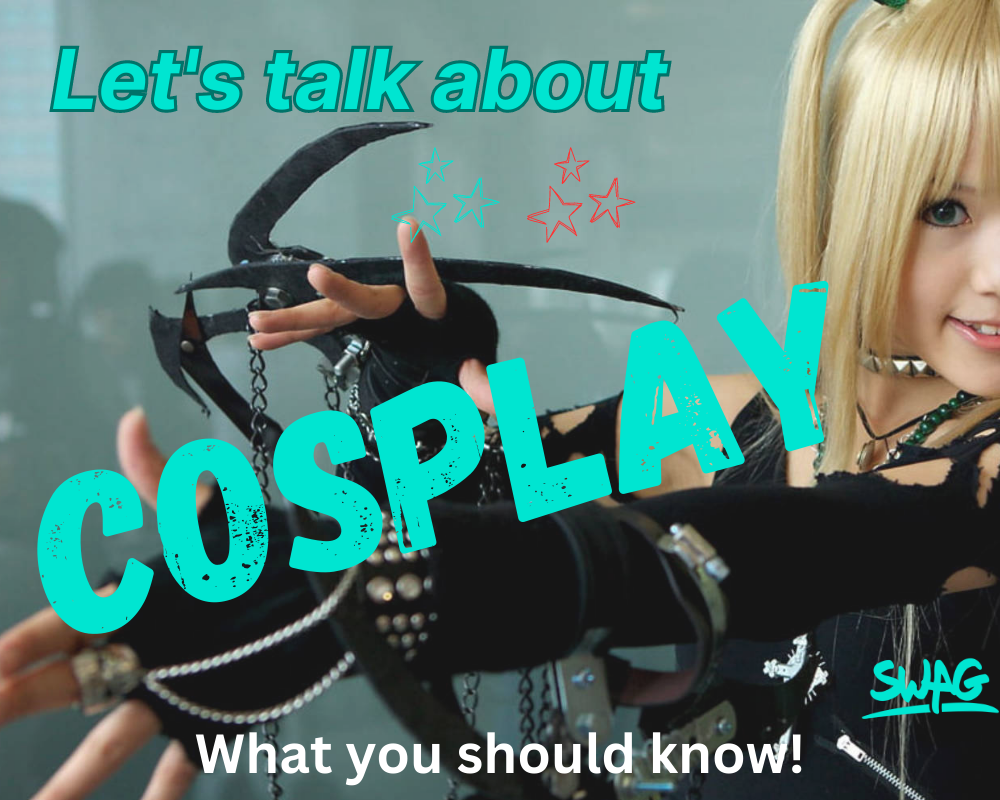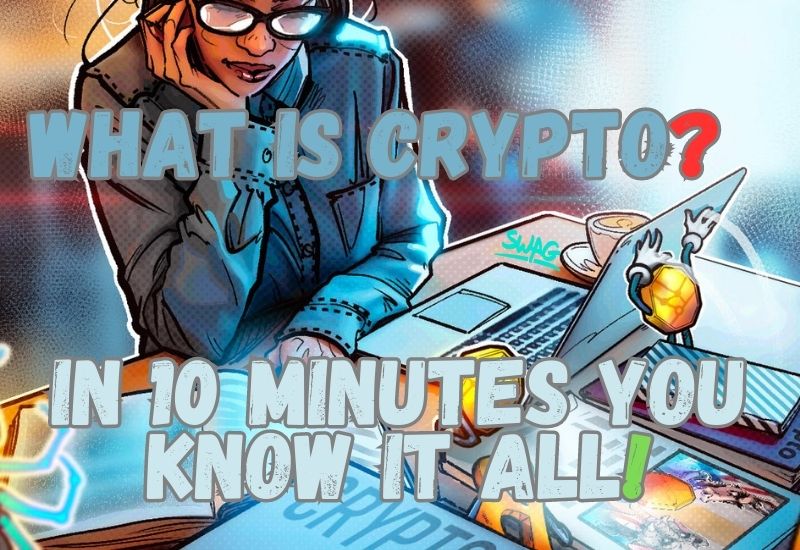Unveiling the Enchanting World of Cosplay and Anime Culture in Taiwan:
Welcome to the mesmerizing realm of cosplay and anime culture in Taiwan! This comprehensive article delves deep into the vibrant subculture that has captivated the hearts of Taiwanese young people. Discover the rich history, the evolution of cosplay, and the profound impact of anime on Taiwan’s popular culture. We’ll journey through a detailed timeline, exploring key milestones, and highlighting the remarkable growth of this phenomenon.
The Origins and Evolution
- Origins of Anime and Its Influence in Taiwan
The Origins of Anime and its Influence in Taiwan Anime, short for animation, originated in Japan and quickly gained popularity across the globe, including Taiwan. In the 1970s and 1980s, anime series such as “Doraemon” and “Dragon Ball” captured the hearts of Taiwanese audiences, paving the way for the flourishing anime culture in the country. - The Emergence of Cosplay: From Japan to Taiwan
Cosplay, a portmanteau of “costume” and “play,” refers to the act of dressing up as fictional characters from anime, manga, video games, or other forms of media. It originated in Japan in the 1970s and gradually spread to Taiwan in the 1990s through the influence of Japanese pop culture. - Cosplay Communities Pioneers in Taiwan
Early cosplay communities and Pioneers in Taiwan In the early days of cosplay in Taiwan, dedicated fans would gather at conventions and fan events to showcase their costumes and share their passion for anime. Pioneers such as Ricky Lau and Miki Wei played a significant role in organizing cosplay activities and fostering a sense of community among Taiwanese cosplayers.
Timeline of Cosplay and Anime Culture in Taiwan
- The 1980s: The Arrival of Anime and Its Growing Popularity
During the 1980s, Taiwanese television started airing popular anime series, leading to a surge in anime fandom. Shows like “Sailor Moon” and “Slam Dunk” became household names, captivating a generation of young viewers and igniting their interest in anime and its related culture. - The 1990s: The Dawn of Cosplay and Fan Gatherings
The 1990s marked the beginning of cosplay events and fan gatherings in Taiwan. With the rise of the internet, cosplay communities started forming online, allowing enthusiasts to connect, share tips and tutorials, and organize meetups to showcase their costumes. - The 2000s: The Rise of Cosplay Events and Competitions
The 2000s witnessed significant growth in the scale and popularity of cosplay events in Taiwan. Cosplay competitions became a highlight of conventions, attracting cosplayers from across the country to showcase their skills and creativity on a larger stage. - The 2010s: The Golden Age of Cosplay in Taiwan
The 2010s brought about a golden age for cosplay in Taiwan, with numerous conventions, such as Comic World Taiwan and Fancy Frontier, attracting thousands of cosplayers and anime enthusiasts. Cosplay photography and videography also gained prominence, allowing cosplayers to capture and share their elaborate costumes and performances. - The 2020s: Modern Innovations and Online Community
The 2020s saw a shift in the cosplay landscape due to the COVID-19 pandemic. In-person events were limited, leading to the rise of virtual conventions and online cosplay showcases. Cosplayers embraced digital platforms and social media to connect, collaborate, and showcase their work, fostering a vibrant online cosplay community.
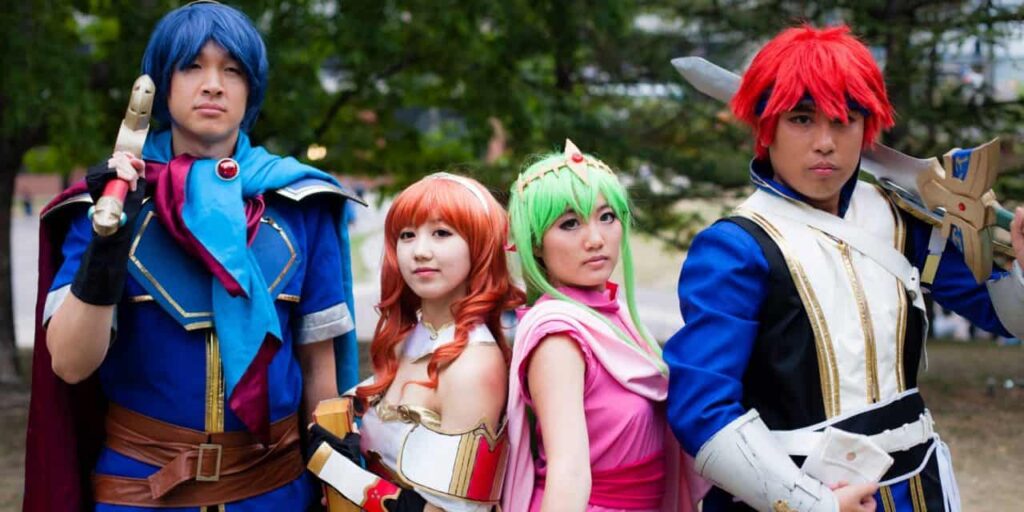
The Craft of Cosplay
- Cosplay Costumes: From Concept to Creation
Creating a cosplay costume involves meticulous planning, design, and craftsmanship. Cosplayers meticulously research and source materials to bring their favorite characters to life, paying attention to even the smallest details. - The Role of Makeup and Wig Styling in Cosplay
Makeup and wig styling are essential components of cosplay. Cosplayers skillfully apply makeup techniques to transform their appearance and emulate the distinct features of their chosen characters. Wigs, often styled and customized, add the finishing touch to the overall look. - Cosplay Accessories and Props: Attention to Detail
Accessories and props play a crucial role in enhancing the authenticity of a cosplay. From weapons and armor to intricate jewelry and accessories, cosplayers invest time and effort into creating or procuring these elements, ensuring accuracy and attention to detail. - Notable Taiwanese Cosplayers and Their Inspirations
Taiwan boasts a talented pool of cosplayers who have gained recognition for their exceptional craftsmanship and performances. Cosplayers like C.K., Xiao Bai, and Yu Yu demonstrate their passion for the art form and inspire others with their dedication and creativity.
Fandom and Community
- Cosplay Conventions and Events in Taiwan
Taiwan hosts a wide range of cosplay conventions and events throughout the year, attracting cosplayers, anime fans, and enthusiasts from all walks of life. These gatherings provide opportunities to showcase costumes, attend workshops and panels, and connect with fellow cosplayers. - Online Platforms and Social Media Communities
The Internet and social media platforms have played a pivotal role in fostering a sense of community among Taiwanese cosplayers. Online forums, Facebook groups, and dedicated cosplay communities provide spaces for cosplayers to share their work, seek advice, and build connections. - Cosplay Competitions: Showcasing Talent and Passion
Cosplay competitions are a significant aspect of Taiwan’s cosplay scene. These contests allow cosplayers to demonstrate their skills, creativity, and stage presence. Competitions range from small-scale events to national championships, providing a platform for cosplayers to gain recognition and appreciation. - The Spirit of Camaraderie and Collaboration
Cosplay has fostered a spirit of camaraderie and collaboration within the Taiwanese cosplay community. Cosplayers often come together to organize group cosplays, plan photoshoots, and support one another in honing their craft. Friendships forged through cosplay often extend beyond the hobby itself.
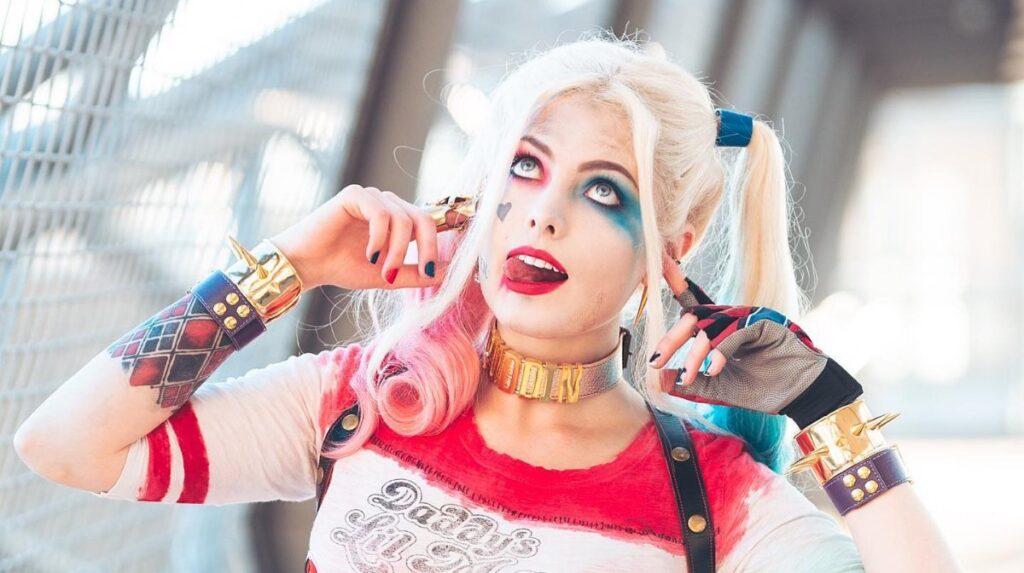
Influence of Anime and Cosplay on Popular Culture
- Anime and Manga’s Impact on Taiwanese Media and Entertainment
Anime and Manga’s Impact on Taiwanese Media and Entertainment Anime and manga have had a profound impact on Taiwanese media and entertainment. Adaptations of popular anime series have been produced in Taiwan, and anime-inspired elements can be seen in music, fashion, and advertising campaigns. - Cross-Generational Appeal: Bridging Divides
One of the unique aspects of anime and cosplay in Taiwan is its cross-generational appeal. Older siblings, parents, and even grandparents share their love for anime with younger generations, creating bonds and fostering a deeper understanding between different age groups. - Anime-themed Cafes, Restaurants, and Merchandise Stores
The popularity of anime and cosplay has given rise to a variety of themed establishments in Taiwan. Anime-themed cafes, restaurants, and merchandise stores offer fans an immersive experience, allowing them to indulge in their favorite anime worlds and connect with like-minded individuals.
Resource Links and Channels
Here are some resource links to websites, blogs, and online communities dedicated to cosplay tutorials, event updates, and discussions.
[Resource Links]
- Taiwan Cosplay Community: [https://www.cosplay.com.tw/]
- Cosplay Mania Taiwan: [https://cosplaymania.com.tw/]
- Taiwanese Cosplay Association: [https://www.facebook.com/TaiwaneseCosplayAssociation/]
- Anime World Taiwan: [https://www.animeworld.com.tw/]
- Cosplay Amino: [https://aminoapps.com/c/cosplay/home/]
- Taiwanese Cosplay Photography Group: [https://www.facebook.com/TaiwanCosplayPhoto/]
[YouTube Channels]
- CosplayTutorial: [https://www.youtube.com/c/CosplayTutorial]
- Aesthetic Cosplay: [https://www.youtube.com/c/AestheticCosplay]
- Cosplay Holic: [https://www.youtube.com/c/CosplayHolicTV]
- Cosplay No Jutsu: [https://www.youtube.com/c/CosplayNoJutsu]
- Cosplay Maki: [https://www.youtube.com/c/CosplayMaki]
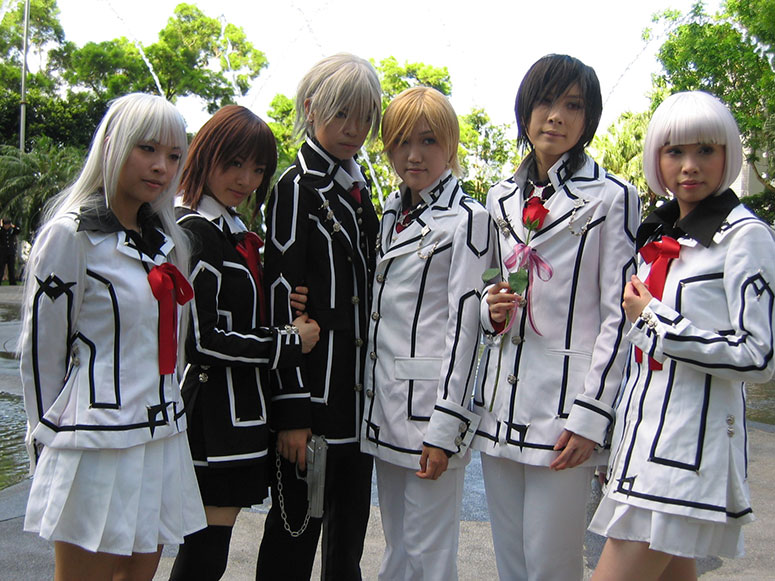
How Cosplay Influenced the Western World
Cosplay, the art of dressing up as fictional characters from various media, has not only taken Taiwan and other Asian countries by storm but has also significantly influenced the Western world. Over the years, cosplay has grown from a niche hobby into a cultural phenomenon that has left a lasting impact on popular culture, entertainment industries, and the way people express their creativity. In this article, we will explore the profound influence of cosplay on the Western world, diving into its origins, growth, and significance.
Origins of Cosplay in the West: The roots of cosplay in the Western world can be traced back to science fiction and comic book conventions of the 1930s and 1940s, where fans would dress up as their favorite characters. However, it wasn’t until the 1970s and 1980s that cosplay started gaining traction and becoming more prominent in the West. The rise of anime and Japanese pop culture during that time, along with the increasing availability of imported Japanese media, introduced Western fans to the concept of cosplay.
Growth and Popularity: As anime and manga gained popularity in the West, so did the interest in cosplay. Conventions such as Comic-Con International and Anime Expo became hubs for cosplayers to showcase their costumes and immerse themselves in the world of their beloved characters. With the advent of social media and the internet, cosplay started reaching a wider audience, and the community began to grow exponentially. Cosplayers shared their creations, tutorials, and experiences online, inspiring others and fostering a sense of community.
Influence on Pop Culture: Cosplay’s influence on Western pop culture cannot be overstated. It has become a mainstream phenomenon, with characters from popular franchises like Marvel, DC, Star Wars, and Harry Potter being cosplayed at conventions and events worldwide. Cosplay has blurred the lines between fiction and reality, allowing fans to embody their favorite characters and participate in their own narratives. The impact of cosplay can be seen in various forms of media, from movies and TV shows to video games and advertising campaigns, where cosplay aesthetics and fan creations are celebrated and acknowledged.
Creative Expression and Self-Identity: Cosplay has become a powerful means of creative expression and self-identity for individuals in the Western world. It provides a platform for fans to showcase their craftsmanship, sewing skills, makeup artistry, and prop-building abilities. Cosplayers embrace the challenge of bringing fictional characters to life and often add their unique twists and interpretations to their costumes. Cosplay also promotes inclusivity and representation, allowing individuals of all backgrounds and body types to participate and celebrate their love for fandom.
Community and Connections: The cosplay community has fostered a sense of camaraderie and belonging among enthusiasts. Cosplayers connect with one another through conventions, local meetups, online forums, and social media platforms. They share tips, techniques, and resources, supporting and inspiring each other in their creative endeavors. Cosplay competitions and showcases provide opportunities for cosplayers to gain recognition and build networks within the industry. The friendships formed through cosplay often extend beyond the hobby, creating lifelong bonds and collaborations.
Economic Impact: The widespread popularity of cosplay has also generated a significant economic impact in the Western world. The demand for cosplay-related merchandise, such as costumes, wigs, accessories, and props, has led to the growth of specialized businesses and online stores catering to the cosplay community. Additionally, conventions and events centered around cosplay attract thousands of attendees, boosting local economies through tourism, hotel bookings, and related businesses.
Cosplay and the LGBTQ+ community
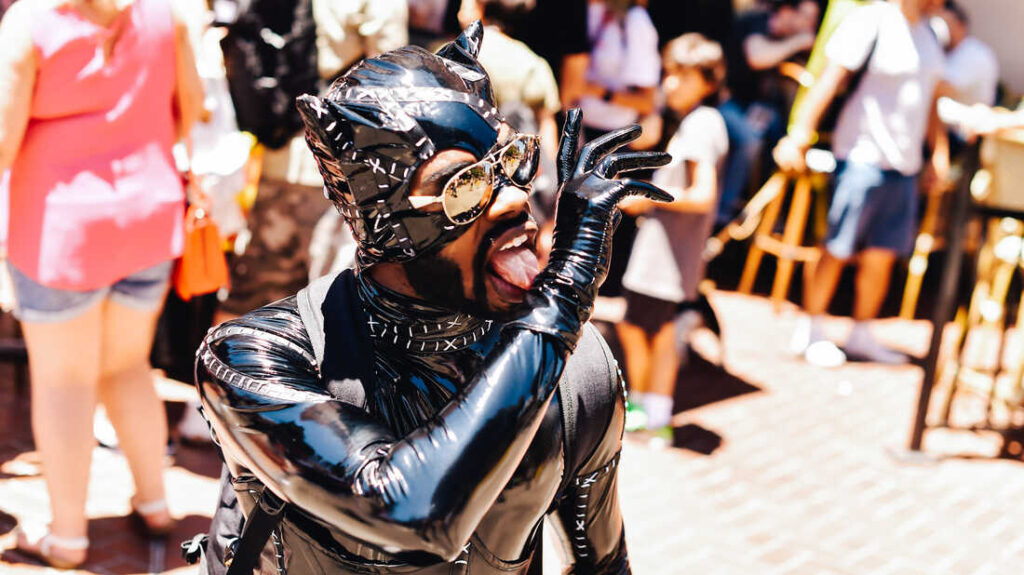
Cosplay and the LGBTQ+ (lesbian, gay, bisexual, transgender, queer, and other gender and sexual minority) community have a strong interconnection and have played significant roles in supporting and empowering one another. Both communities share a passion for self-expression, creativity, and embracing individuality, making them natural allies and collaborators. In this part, we will explore how cosplay and the LGBTQ+ community interweave, highlighting the positive impact they have had on each other.
- Inclusivity and Representation: Cosplay provides a platform for individuals to express themselves authentically, allowing LGBTQ+ cosplayers to embody characters that resonate with their identities and experiences. Cosplayers from the LGBTQ+ community often choose characters that reflect their gender identity, and sexual orientation, or serve as symbols of representation. This not only allows them to celebrate their identities but also helps to create visibility and representation within the broader cosplay community.
- Safe and Supportive Spaces: Cosplay conventions and events have become safe and inclusive spaces for the LGBTQ+ community. These gatherings foster an environment where individuals can freely express themselves without fear of judgment or discrimination. LGBTQ+ cosplayers find acceptance, support, and a sense of belonging within the cosplay community, as they can connect with like-minded individuals who share similar experiences.
- Cosplay as Gender Exploration: Cosplay provides a unique opportunity for individuals to explore and experiment with gender identities. Crossplay, a form of cosplay where individuals dress up as characters of a different gender, has become increasingly popular. For LGBTQ+ individuals, crossplay can be a powerful way to express their gender identity, challenge societal norms, and celebrate gender diversity.
- Cosplay as Empowerment: Cosplay serves as a source of empowerment for many LGBTQ+ individuals. It allows them to break free from societal expectations and embrace their authentic selves. Through cosplay, LGBTQ+ individuals can explore characters who have overcome adversity, accepted their identities, or become symbols of strength. This act of embodying these characters can provide inspiration and empowerment for both the cosplayer and the wider LGBTQ+ community.
- Community Building and Activism: The cosplay community often engages in social activism and supports various causes, including LGBTQ+ rights. LGBTQ+ cosplayers use their platform and visibility to raise awareness, advocate for equality, and challenge stereotypes. They organize panels, workshops, and events that promote inclusivity, diversity, and acceptance within the cosplay community and beyond. By sharing their stories and experiences, LGBTQ+ cosplayers inspire others and create spaces that embrace all identities.
- Cosplay Competitions and Showcases: Cosplay competitions and showcases provide LGBTQ+ cosplayers with opportunities to showcase their talent, craftsmanship, and creativity. These platforms allow them to gain recognition, celebrate their unique interpretations of characters, and challenge traditional gender norms. Their participation not only elevates the representation of the LGBTQ+ community within the cosplay community but also fosters acceptance and understanding among audiences.
The interweaving of cosplay and the LGBTQ+ community is a beautiful and empowering collaboration. Through cosplay, LGBTQ+ individuals find avenues for self-expression, representation, and community building. The cosplay community, in turn, embraces diversity, supports inclusivity, and amplifies the voices of LGBTQ+ cosplayers. Together, they inspire acceptance, challenge societal norms, and celebrate the power of self-expression and identity.
A multifaceted phenomenon, that is what cosplay is.
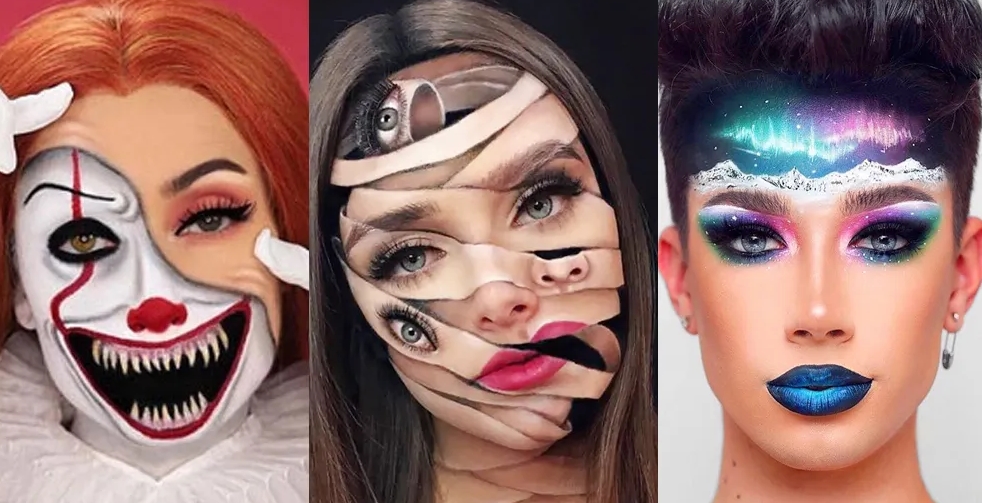
Cosplay is a vast and ever-evolving cultural phenomenon that encompasses numerous dimensions. From performance art and cultural exchange to professional endeavors and mental health benefits, cosplay continues to captivate and inspire people worldwide. The diversity and creativity within the cosplay community ensure that there is always something new and exciting to explore and celebrate. Here are some additional points to consider:
- Cosplay as Performance Art: Cosplay involves more than just wearing a costume; it often incorporates performance elements. Cosplayers bring characters to life through acting, posing, and embodying their mannerisms. They may participate in skits, stage performances, or interactive experiences that enhance the overall cosplay experience.
- Cultural Exchange and Global Community: Cosplay transcends borders and has become a global phenomenon. Cosplayers from different countries and cultures come together at conventions, online platforms, and international events, fostering cultural exchange and forming connections. The sharing of techniques, materials, and styles has enriched the global cosplay community, allowing for cross-cultural collaborations and inspiration.
- Professional Cosplay: Some cosplayers have turned their passion into a profession. They work as professional cosplayers, attending events, creating commissioned costumes, and engaging with sponsors or brands. Professional cosplayers often have a significant online presence, creating content, collaborating with other professionals, and monetizing their skills and fan base.
- Cosplay Photography: Photography plays a crucial role in showcasing the artistry and creativity of cosplay. Cosplay photographers capture stunning images of cosplayers in elaborate costumes, using various techniques, locations, and visual effects. Cosplay photography has its own dedicated community, and photographers often collaborate with cosplayers to create visually stunning and immersive photoshoots.
- Cosplay and Charity: Many cosplayers engage in charity work, using their costumes and talents to raise funds and awareness for charitable causes. They participate in charity events, hospital visits, and fundraisers, bringing joy to children and contributing to their communities. Cosplay charity initiatives provide an avenue for cosplayers to give back and make a positive impact.
- Evolution of Cosplay Techniques: Cosplay craftsmanship has evolved significantly over the years. Techniques such as 3D printing, foam armor construction, and advanced sewing skills have transformed the quality and intricacy of costumes. Cosplayers continually experiment with new materials, technologies, and methods to push the boundaries of their creations.
- Cosplay and Mental Health: Cosplay has been recognized as a therapeutic outlet for individuals facing mental health challenges. It provides a form of escapism, boosts self-confidence, and offers a supportive community. Cosplay allows individuals to temporarily adopt the persona of a beloved character, providing a sense of empowerment and respite from everyday struggles.
- Cosplay and Historical Recreation: In addition to fictional characters, cosplay extends to historical figures and eras. Historical cosplay involves meticulous research and attention to detail to accurately recreate period clothing and accessories. It combines a love for history with the artistry and craftsmanship of cosplay, offering a unique way to engage with the past.
- Gender and Body Positivity: Cosplay embraces gender and body positivity, challenging societal beauty standards. It encourages individuals of all genders, sizes, and backgrounds to participate and celebrate their bodies. Cosplayers often engage in body positivity movements and advocate for inclusivity within the community.
- Cosplay Outreach and Education: Cosplayers frequently engage in educational initiatives, hosting panels, workshops, and tutorials to share their knowledge and skills with others. They offer guidance on costume construction, makeup techniques, wig styling, and more. Cosplay outreach programs in schools and community centers promote creativity, craftsmanship, and self-expression among young enthusiasts.
Is Cosplay a weird thing to do?
Cosplay is not a weird thing to do. While it is true that cosplay involves dressing up as fictional characters, it is solely for the purpose of play. Cosplay is a form of creative expression that appeals to people of all ages, backgrounds, and interests.
Cosplay allows individuals to showcase their artistic skills, craftsmanship, and attention to detail. Many cosplayers invest significant time, effort, and resources into creating intricate costumes that accurately represent their chosen characters. This process often involves advanced sewing, prop-making, makeup artistry, and even digital design techniques. Additionally, cosplay is not limited to recreating characters from children’s media. Cosplayers portray characters from various genres, including video games, anime, comics, movies, and TV shows. Cosplay has become a source of professional opportunities for some individuals. Professional cosplayers attend conventions as guests, collaborate with brands, create content for social media platforms, and even participate in modeling or acting gigs related to their cosplay endeavors.
Cosplay-themed adult content has gained popularity
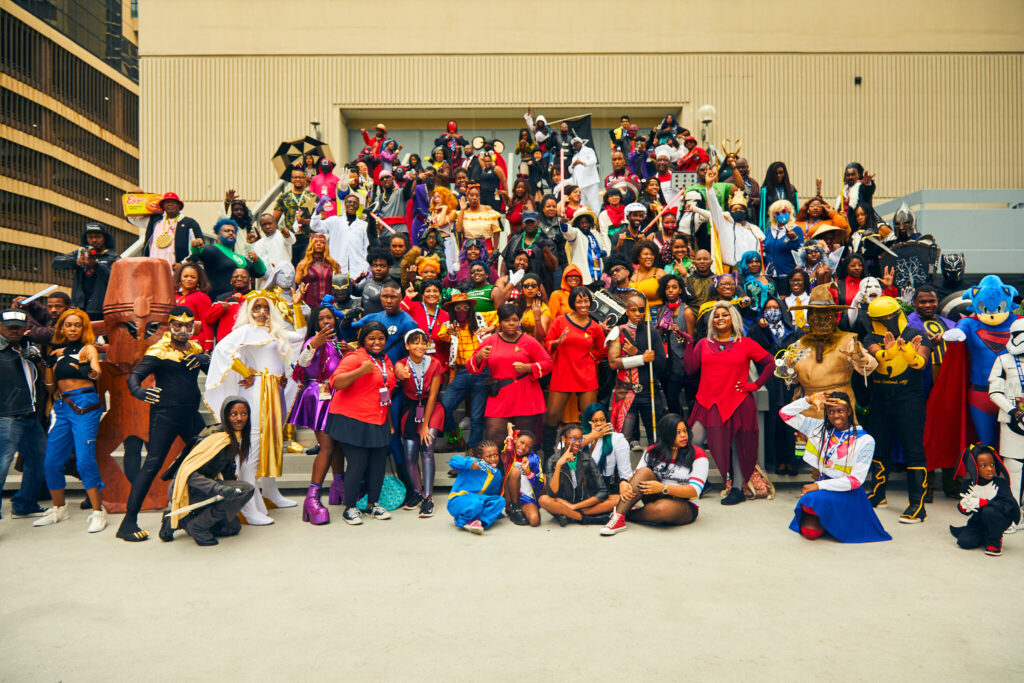
The adult industry has adapted to incorporate elements of cosplay, recognizing the popularity and interest in cosplay-themed adult content. By catering to specific fantasies, focusing on accuracy, and collaborating with cosplayers, the industry has created a niche market within the larger cosplay community. However, it is essential to approach this topic with respect and recognize the importance of consent and boundaries within the adult entertainment industry.
- Cosplay as a Fantasy Fulfillment: Cosplay provides an avenue for individuals to explore and indulge their fantasies. By combining elements of cosplay with adult content, the adult industry caters to individuals who have specific characters or role-play fantasies. This adaptation allows fans to engage with their favorite characters in a more explicit context, providing a heightened level of fantasy fulfillment.
- Costume and Character Accuracy: Cosplay porn often emphasizes the accuracy of costumes and the portrayal of characters. Adult performers and production companies invest in high-quality costumes, wigs, and props to create visually appealing and recognizable representations of popular characters. This attention to detail enhances the fantasy element and caters to fans who appreciate authenticity.
- Niche and Fan-Specific Content: The adult industry has recognized the niche appeal of specific characters or franchises within the cosplay community. Production companies may create content featuring characters from popular anime, video games, or comic books, catering to the desires of fans who are specifically interested in those characters. This approach allows for a more targeted and customized experience for viewers.
- Collaboration with Cosplayers: Some adult performers collaborate with cosplayers to create content that combines their skills and expertise. These collaborations often involve cosplayers who are comfortable with adult content and are willing to explore explicit themes while staying true to the characters they portray. Such collaborations can offer a unique and authentic experience for fans of both cosplay and adult entertainment.
- Online Communities and Platforms: The rise of online platforms and social media has allowed for the growth of a dedicated community around cosplay porn. Fans can interact with performers, share their preferences, and request specific content. Online communities and platforms provide a space for individuals to connect and engage with others who share similar interests in cosplay-themed adult content.
It is important to note that the adult industry’s adaptation of cosplay has its controversies and ethical considerations. Consent, respect, and boundaries must be paramount in any adult content production, ensuring the well-being and agency of all involved.
Top 25 Contributors to the Cosplay Industry
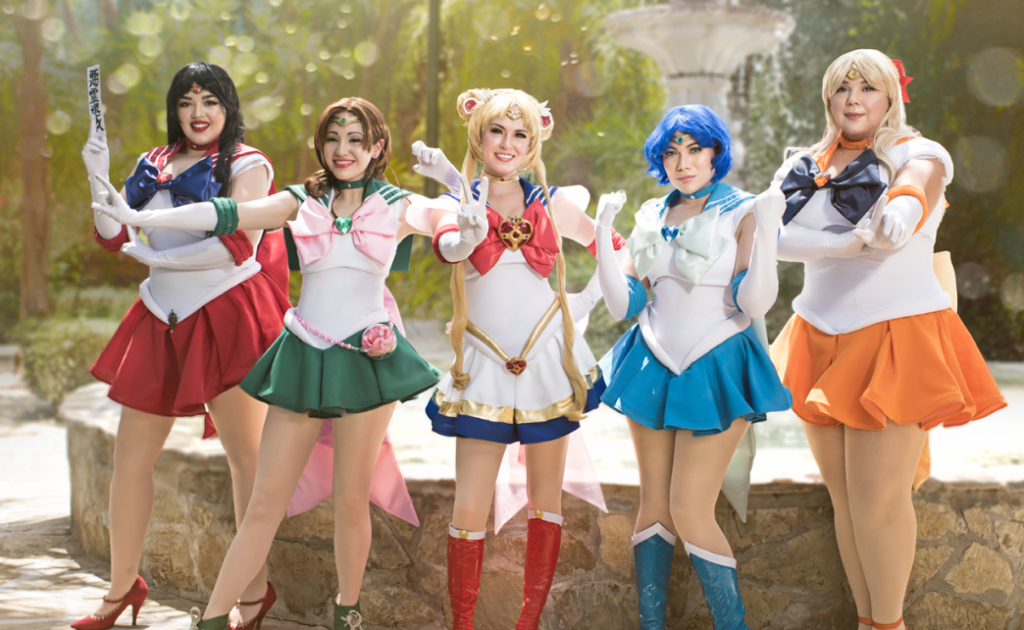
the provided links may direct to the respective cosplayers’ official social media accounts, websites, or YouTube channels, where you can explore their works and learn more about their cosplay journeys.
- Yaya Han – “Queen of Cosplay” known for her exceptional craftsmanship and entrepreneurial ventures. Website
- Kamui Cosplay – Renowned for intricate armor and prop designs. YouTube | Website
- Jessica Nigri – Popular for detailed cosplays and engaging social media presence. Instagram | YouTube
- Leon Chiro – an Italian cosplayer is known for his stunning portrayals of male characters. Instagram | YouTube
- Stella Chuu – Talented cosplayer and burlesque performer known for glamorous costumes. Instagram | YouTube
- Maul Cosplay – Specializes in transformative and highly detailed cosplays. Instagram | Facebook
- Jannet Incosplay – Russian cosplayer is known for stunning portrayals of female characters. Instagram | YouTube
- Kinpatsu Cosplay – South African cosplayer celebrated for wig styling and attention to detail. Instagram | YouTube
- Narga-Lifestream – Talented Russian cosplayer is known for crafting skills and intricate armor. Instagram | YouTube
- Enji Night – Hungarian cosplayer praised for versatile character portrayals. Instagram | YouTube
- Vampy Bit Me – Known for vibrant and authentic portrayals of characters from pop culture. Instagram | YouTube
- Pugoffka – Ukrainian cosplayer recognized for attention to detail and character accuracy. Instagram | Facebook
- Drefan Cosplay Art – German cosplayer is known for intricate armor designs and realistic portrayals. Instagram | YouTube
- Gladzy Kei – Canadian cosplayer celebrated for elegant and visually striking interpretations. Instagram | Facebook
- Nadya Sonika – Captivating cosplayer is known for portrayals of characters from the Final Fantasy series. Instagram | YouTube
- Riddle – American cosplayer praised for sewing skills and attention to detail. Instagram | YouTube
- Vickybunnyangel – Canadian cosplayer admired for adorable and impeccably crafted cosplays. Instagram | YouTube
- Spiral Cats – Korean cosplay team is known for its attention to detail and intricate costumes. Instagram | Facebook
- Cowbutt Crunchies Cosplay – Duo celebrated for comedic performances and stunning craftsmanship. Instagram | YouTube
- Ginny Di – An impressive cosplayer known for transformations and skillful portrayals. Instagram | YouTube
- Stella Eclipsed – United Kingdom-based cosplayer celebrated for breathtaking cosplays. Instagram | YouTube
- Kinpatsu – South African cosplayer known for exceptional wig styling and versatile portrayals. Instagram | YouTube
- It’s Raining Neon – a Swedish cosplayer known for vibrant and colorful cosplays. Instagram | TikTok
- Astarohime – Russian cosplayer celebrated for ethereal and enchanting portrayals. Instagram | YouTube
- Leafsan Cosplay – United States-based cosplayer known for creative and innovative cosplays. Instagram | Facebook
In conclusion, cosplay is a vibrant and diverse community that fosters creativity, self-expression, and connection. From its origins in Japan to its global reach, cosplay celebrates the power of imagination and has left an indelible mark on popular culture, inspiring individuals to embrace their passions and forge meaningful connections.
You made it this far!
In that case, you want to know the top Cosplay events around the world that you need to visit. I created this list for you and hope you will find out more about this yourself in a personal way. It was a pleasure making this article for you! Have a fantastic day!
Here are the top 10 cosplay events around the world, along with a brief description and a website link for more information about each event:
- San Diego Comic-Con International (United States) – One of the largest pop culture conventions featuring a wide range of cosplay activities, panels, and exhibitions. Website
- Anime Expo (United States) – The largest anime convention in North America, known for its vibrant cosplay scene and anime-related events. Website
- Comiket (Japan) – A biannual event in Tokyo that focuses on self-published manga, anime, and doujinshi, attracting a massive cosplay community. Website
- Dragon Con (United States) – A multigenre convention in Atlanta, known for its diverse cosplay, including sci-fi, fantasy, gaming, and more. Website
- WonderCon (United States) – A sister convention to San Diego Comic-Con, offering a platform for cosplayers to showcase their creativity and fandom. Website
- C2E2 (United States) – The Chicago Comic & Entertainment Expo celebrates cosplay with a wide range of events, contests, and photo opportunities. Website
- World Cosplay Summit (Japan) – An annual international cosplay event that brings together cosplayers from around the world for competitions and cultural exchange. Website
- EuroCosplay (Europe) – A cosplay championship held at various conventions across Europe, where national winners compete for the title of European Champion. Website
- ChinaJoy (China) – One of the largest gaming and digital entertainment expos in Asia, featuring an impressive cosplay competition and exhibitions. Website
- MCM Comic Con (United Kingdom) – A series of pop culture conventions held in various locations in the UK, offering a platform for cosplayers to showcase their skills and passion. Website
Additional Info – terms and meanings
Here is a list of typical words used in the cosplay world, along with their meanings.
- Cosplay: Short for “costume play,” it refers to the practice of dressing up as a character from popular culture, typically from anime, manga, video games, movies, or TV shows.
- Wig: A head covering made from synthetic or real hair that cosplayers wear to accurately portray a character’s hairstyle.
- Prop: Short for “property,” it refers to any accessory or item that cosplayers carry or incorporate into their costume to enhance the character portrayal.
- Armor: Protective gear or costumes that resemble armored suits, commonly seen in characters from fantasy or science fiction genres.
- Crossplay: The act of cosplaying a character of the opposite gender, allowing cosplayers to explore characters outside their gender identity.
- Mashup: A cosplay concept where two or more characters or universes are combined to create a unique and original costume design.
- Fabrication: The process of creating costumes and props from scratch, often involving sewing, crafting, and sculpting techniques.
- Cosplay Contest: A competition where cosplayers showcase their costumes and performances, judged based on accuracy, craftsmanship, and presentation.
- Closet Cosplay: Creating a cosplay using everyday clothing items or pieces from one’s existing wardrobe instead of making a costume from scratch.
- Reference Image: A visual source, often from the original source material, used as a guide to recreate a character’s appearance accurately.
- Cosplay Group: A gathering of cosplayers who share a common interest in specific fandoms or characters.
- Makeup: The application of cosmetics to enhance the appearance and transform into a character, including face painting, prosthetics, and special effects.
- Convention: An event where cosplayers come together to showcase their costumes, attend panels, participate in activities, and interact with fellow enthusiasts.
- Work in Progress (WIP): Sharing the process of creating a cosplay, often through social media or online platforms, to document the stages of construction.
- Crossplay: Cosplaying a character of a different gender than the cosplayer’s own gender identity.
- Masquerade: A cosplay competition or showcase where participants perform skits or present their costumes on stage.
- Handler: A person who assists cosplayers during conventions, helping with logistics, photography, and general support.
- Characterization: Portraying a character’s personality, mannerisms, and behavior to bring the cosplay to life.
- Foamsmithing: The art of creating props and armor using foam materials, such as EVA foam, which can be shaped, heat-formed, and painted.
- Cosplay Photographer: A photographer who specializes in capturing high-quality images of cosplayers and their costumes.
- Casual Cosplay: Creating a simplified version of a character’s costume or incorporating subtle elements of a character into everyday attire.
- Gijinka: The concept of cosplaying anthropomorphized or humanized versions of non-human characters, such as animals, objects, or abstract ideas.
- Genderbend: Cosplaying a character by changing their gender, often resulting in a unique and creative interpretation.
- Props Maker: An individual who specializes in creating props and accessories for cosplayers, often commissioned to bring custom designs to life.
Additional resources about Cosplay for free.
there are several documentaries about cosplay available for free viewing on various platforms, including YouTube. Here are a few notable ones:
- “Cosplay: Crafting a Secret Identity” – A documentary that explores the world of cosplay and its impact on the lives of dedicated cosplayers. YouTube Link
- “Cosplay Culture” – A series of short documentaries that delve into the cosplay community, featuring interviews with cosplayers and behind-the-scenes looks at conventions. YouTube Playlist
- “Cosplay Universe” – A documentary that follows cosplayers as they prepare for and participate in various conventions, exploring the passion and dedication behind their craft. YouTube Link
- “Heroes of Cosplay” – A reality TV series that follows several cosplayers as they compete and showcase their skills at conventions. YouTube Playlist
- “Cosplay: Beyond the Fantasy” – A documentary that takes an in-depth look at the cosplay community, exploring the motivations, challenges, and creative processes of cosplayers. YouTube Link

